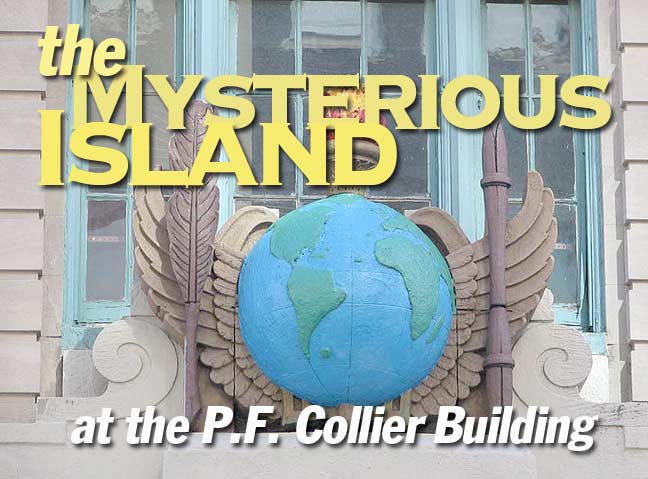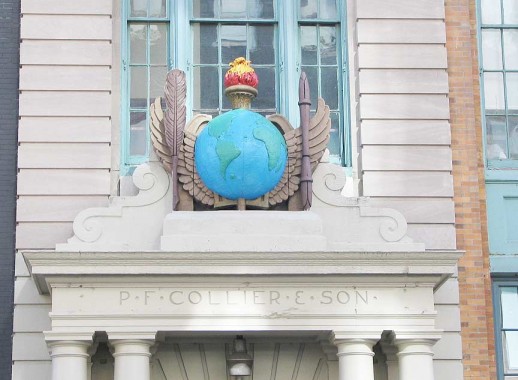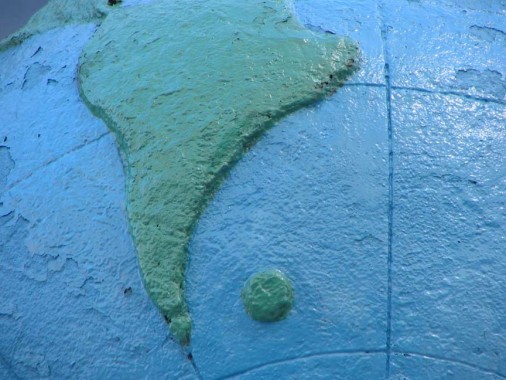Bear with your webmaster for one night, as I inquire about something that many will find ultra-esoteric even for the usual Forgotten fare. I’m a little pressed for time, since I’ve been perusing, most of the evening, Greg Young and Tom Meyers’ impressive new Bowery Boys site, in business since July 2007, tackling subjects like the origin of ticker tape, the 5th Avenue Christmas snowflake, the Peppermint Lounge, and Agent 355(not Client 9). There’s something new just about every day, including podcasts, the technology of which escapes your webmaster (I haven’t retired my VCR yet.) These guys should have a wide readership, so I’ve plunked them in the links bar. Check ’em out.
Today I want to mention an anomaly I discovered this past week in the otherwise dazzling (if somewhat slapdash) terra cotta globe on the P.F. Collier Building on West 13th in the heart of Meatpackville.
First, a little background on this building, an anomaly itself since this, the land of beef, Stella McCartney, veal, Sex And The City, pork, Diane von Furstenburg, and tripe, was an odd place for a publishing house. As I mentioned on my previous Meatpacking page:
I hadn’t noted it before but the symbol is even more involved than I had realized earlier. Besides the globe and wings, there are two pens on either side, a quill pen and what appears to be a fountain pen, both still in wide use in the 1910s when the building was constructed. Bics were still 50 years ahead.
Atlantis? Lemuria (Mu), perhaps? The location of the mysterious island corresponds approximately to where the Falkland Islands, the British Overseas territory known chiefly for the Falklands War between Argentina and the United Kingdom in 1982, when the former asserted a claim on its neighboring islands; after Argentina occupied the Malvinas, as the islands are called there, in March 1982, she was ousted by the British after a 2-month conflict. Though defeated, Argentina maintains a claim on the islands. The lone island on the Collier globe is much larger than the Falkland chain.
Other than P.F. Collier’s 1909 publication of Charles Darwin’s Voyage of The Beagle, which has a chapter on the Falklands, I can’t think of how or why the island would be presented so disproportionately here. Perhaps it’s a simple practical matter like hiding a screw, though I tend to doubt that. The makers of the globe are long gone, and so the Mysterious Island shown here will, apparently, have to remain a puzzler. There’s also a strange island off Africa’s west coast on the Collier globe that corresponds to Cape Verde (again bigger than it should be.) Why? You got me there.
By World War II Collier’s had attained a weekly readership of 2.8 million!
Photographed March 16, 2008; page completed March 19.




